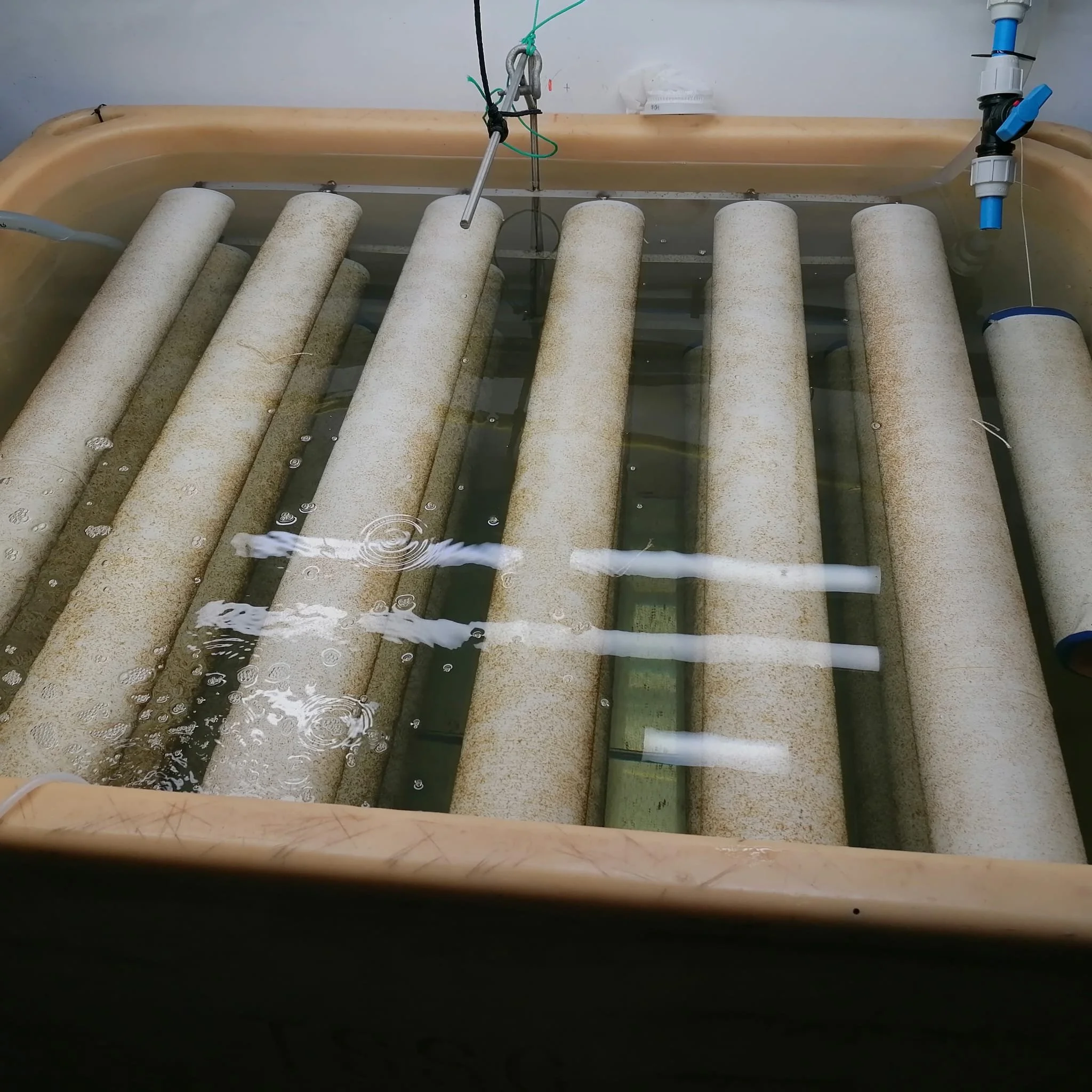A new year begins: 2025-2026 seeding
Seaweed farming, like most land based crop farming, is undertaken on an annual cycle - seeding in the autumn and harvesting the next summer. Filling in the details of this cycle however, reveals a picture that is a bit more complicated…
18 spools of 220 metres of twine, seeded with mini-fronds!
The new growing season at KelpCrofters begins with the collection of sporing fronds (sorus) of Alaria esculenta way back in April, with Kyla rummaging around the low water line on the spring tide, her well trained eye in search of promising sorus. Back in the lab, the collected fronds are encouraged to release their spores, and these are propagated further throughout the summer in controlled lab conditions under red light. Come October, these bubbling flasks are a soup of millions of spores. They then spend a couple of weeks under blue light, which prompts reproduction rather than division, forming microscopic young fronds. These are then sprayed onto twine, which is again kept in carefully controlled conditions in the lab for a further couple of weeks under white light (above). The juvenile kelp are now suitably hardy and tenacious, despite being only about one millimetre long. Finally they are ready to be transferred onto ropes at sea, to fend for themselves in the face of the approaching winter storms.
Deploying twine onto growing ropes and out to sea.
This is where we find ourselves here at KelpCrofters. With orders lined up for our May 2026 harvest, we have more than doubled our number of growing lines this coming year. A new deployment procedure, perfected this year, has streamlined this operation, allowing us to watch the forecast and nip out between gales to deploy seeded growing ropes. The seed looks good, the farm is braced for the winter ahead. Now it is over to the tiny, resilient kelp to settle in, and await the lengthening days of spring, when its rapid growth will begin.
Alex



